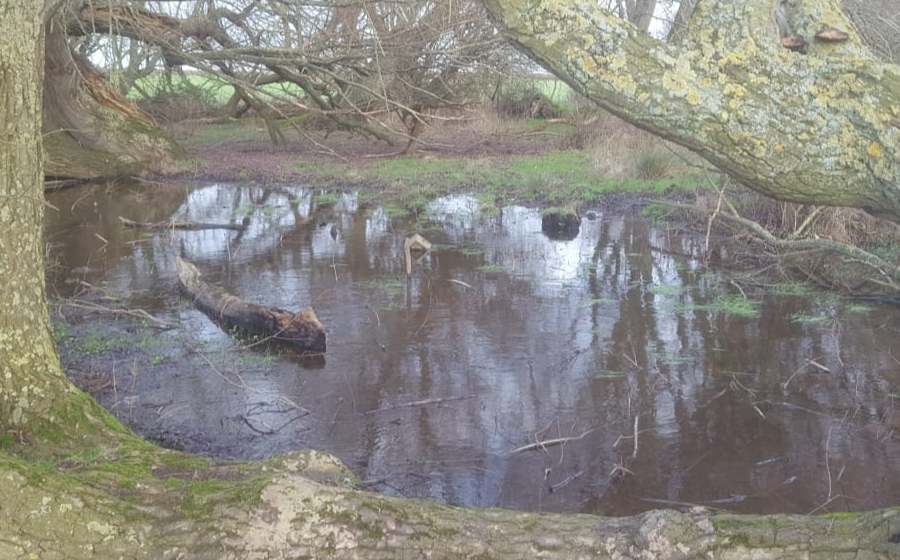A blow well is an artesian spring, of a type seldom (if at all) found across the British Isles except for the coastal margins of Lincolnshire. The particular geological configuration needed exists between Louth and Barton-Upon Humber. Rainfall on the chalk of the Lincolnshire Wolds can reappear as chalk streams, particularly along the natural spring line at the foot of the western chalk scarp, but towards the Humber Estuary, groundwater is confined by a consistent cover of quaternary (glacial) clay. The water here is therefore under greater pressure (artesian) and where there is an opening in the clays from the chalk to the surface and there is enough pressure the groundwater emerges – termed a ‘blow well’.
The Lincolnshire Chalk Streams Project (LCSP) were awarded grant funding in August 2021 from Natural England’s East Midlands Seedcorn Fund for a ‘Lincolnshire Blow Wells – a part of our Nature Recovery Network’ project. The LCSP used the funds to employ a geological specialist to survey 17 known blow well sites for their potential to be designated as Local Geological Sites. The LCSP worked closely with partners from the Blow Wells Working Group, in particular, Greater Lincolnshire Nature Partnership, Environment Agency and North East Lincolnshire Council to present these sites to a panel of expert geologists. There was a great outcome of 4 new designated sites, one location encompassing 4 blow wells.
In addition, the funding has helped to train 14 volunteers on a new blow well monitoring project developed by the Blow Wells Working Group partners. The newly trained citizen scientists will be collecting site specific information that will help inform how these incredibly rare and valuable habitats can be protected and improved to help with our of nature recovery.
Our thanks go to the landowners who engaged with us during this project and to Natural England for the funding.
For more information, please visit the website.

